Heather Dewey-Hagborg
Heather Dewey-Hagborg (born June 4, 1982, Philadelphia, Pennsylvania) is an information artist and bio-hacker.[1] She is best known for her project Stranger Visions, a series of portraits created from DNA she recovered from discarded items, such as hair, cigarettes and chewing gum while living in Brooklyn, New York.[2] From the extracted DNA, she determined gender, ethnicity and other factors and then used face-generating software and a 3D printer to create a speculative, algorithmically determined 3D portrait. While critical of technology and surveillance, her work has also been noted as provocative in its lack of legal precedent.[3][4]
Heather Dewey-Hagborg | |
|---|---|
 Heather Dewey-Hagborg (photo from her 2013 project DNA Spoofing) | |
| Born | June 4, 1982 Philadelphia, Pennsylvania, U.S. |
| Alma mater | New York University |
| Occupation | Information artist |
Notable work | Stranger Visions |
| Website | http://deweyhagborg.com |
Education
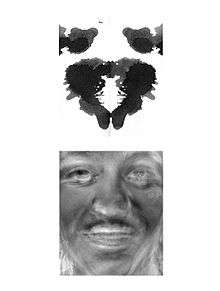
Dewey-Hagborg is an information and bio artist whose works explore the intersection between art and science.[5] As a student in the Information Arts program at Bennington College,[6] she participated in computer science classes, which laid the groundwork for the science-based artwork she would later envision using algorithms, electronics, and computer programming.[5] She earned a Bachelor of Arts (B.A.) degree in 2003.
Dewey-Hagborg continued refining her work as an artist and computer programmer, studying artificial intelligence,[5] while obtaining a Master of Professional Studies (M.P.S.) in Interactive Telecommunications from New York University (NYU)[7] in 2007. It was here she curated a robotic performance art show called Robots on the March! in March 2005, and exhibited a piece called Lighter than Air: an experiment in constructing an autonomous flying robot.[8][9]
As a final project at NYU, Dewey-Hagborg explored the question "Can computers be creative?" in an exhibit she called Spurious Memories. She developed an autonomous face categorizing and generating software program which recognized facial components, made comparisons and adjustments, and produced unique representations of the human face through mass exposure to facial images.[10]
After graduating from NYU, she became a doctoral candidate in electronics arts at Rensselaer Polytechnic Institute[11][6][12][13][14] and is expected to graduate in 2016.
Dewey-Hagborg has worked as a teaching assistant at Rensselaer Polytechnic Institute,[15] an adjunct professor at NYU's Interactive Telecommunications Program,[16] and an adjunct professor at NYU's Courant Institute of Mathematical Sciences.[15][17]
As of August 2014, Dewey-Hagborg resides in Chicago, Illinois, teaching art and technology studies at the School of the Art Institute of Chicago.[18] As an educator her areas of interest include art and technology, multimedia, digital photography, research-based art and programming, and computer science.[5][15]
Projects
Totem
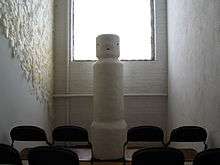
Dewey-Hagborg's Totem (2010) was a site-specific multimedia sculpture characterizing her earlier work. Totem, an idol, was designed to explore the implications of language and artificial intelligence using machine learning technology.[19] Exploiting audio surveillance techniques to eavesdrop on and record conversations at the installation site, Dewey-Hagborg wrote algorithms to then isolate word sequences and grammatical structures into commonly used units. Influenced by Hebbian theory, she programmed the sculpture's computer to generate speech based on the most frequently occurring language structures in any given recording period. Over time, the least frequently elicited words or units would fade or be dropped from the sculpture's spoken vocabulary. The remaining units, stored in the sculpture's memory, were then spoken at random intervals.[20]
Martha Schwendener, of The New York Times, wrote that Totem showed promise, but, because of audio difficulties and its fragmented, randomly generated speech, the piece "failed to connect human speech, meaning, and technology in a profound fashion."[21]
Stranger Visions
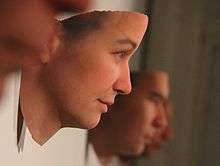
Stranger Visions (2012–2014) is a science-based, artistic exploration using DNA as a starting point for lifelike, computer generated 3-D portraits.[14][22][23][24]
She began this project questioning how much information could be understood about a person using genetic detritus left behind by strangers in New York City.[11][1][25][5][26] "I was really struck by this idea that the very things that make us human – hair, skin, saliva, and fingernails – become a real liability for us as we constantly shed them in public. Anyone could come along and mine them for information."[25] She hoped, by producing realistic sculptures of anonymous people using clues from their DNA, to spark a debate about the use or the potential misuse of DNA profiling, privacy, and genetic surveillance.[11][27][28][29]
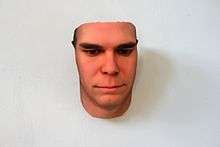

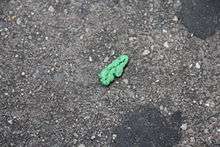
As part of her research for Stranger Visions, she took a three-week crash-course[25] in biotechnology at the Genspace laboratory in New York[25][27] where she learned about the significant amount of personal information that an amateur biologist could learn about someone through biotech processes.[1][25][26]
She began the process of extracting DNA from the samples she collected. The extraction involves treating a hair sample, for example, with a gel that dissolves the hair, and a primer specifically developed to help locate characteristics like eye color or gender along the genome.[12][31] She might repeat this process up to 40 times,[32] looking for genetic variants influencing traits like eye color, hair color, and racial ancestry, in order to complete a portrait.[3]
Once the DNA strands are extracted from the samples, she then amplifies, or copies, specific regions of the genome, using a technique called Polymerase Chain Reaction, or PCR, a process advanced by Kary Mullis, a winner of the Nobel Prize in Chemistry (1993).[11][25] These amplified regions of the genome make it possible to identifying single nucleotide polymorphisms, or SNPs (pronounced "snips"),[29] which contain variables in the base pairs that give clues to a person's individual genetic make up (e.g., whether or not a person's eyes might be blue, brown or green). These results are then sent for analysis to a company for sequencing. She used 23andMe,[5][32] a DNA analysis service, for Stranger Visions.
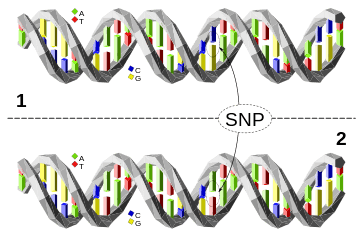
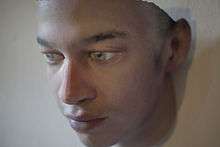
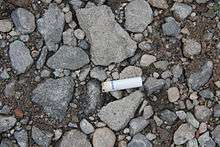
The genetic blueprint[12][31] she receives in return is a text file full of coded information identifying the unique positioning of the 4 nucleobases adenine, thymine, cytosine, and guanine, or ATC and G, that make up the sections of the genome she is interested in.[12] This data is then entered into a customized computer program she wrote.[6] The program interprets the code and provides her with a list of traits, including propensity for obesity, eye color, hair color, hair curl, skin tone, freckles, and gender.[25][26] She then takes these traits, as many as 50, and enters them into a face-generating program to configure the 3-D portraits.[1][25] Her previous experience with facial recognition algorithms gave her the ability to repurpose an existing facial recognition program, from Basel, Switzerland.[35] She reworked the program to generate faces instead of just recognizing facial features.[5] The resulting model changes facial dimensions (e.g., width of the nose and mouth) and characteristics with the genetic information it receives. Before making the final 3-D print,[26] She generates several different versions of the face, finally choosing the one she finds most aesthetically pleasing.[6][32]
Critics of Dewey-Hagborg's Stranger Visions question whether or not the work crosses ethical and legal boundaries.[2] They make a distinction between an artist's right to express societal concerns through artwork and the act of collecting personal, genetic information without informed consent.[31] The fact that DNA samples are regularly "left behind" or abandoned does not mean those people have relinquished their interest in how that information is used.[27][3][29]
Some laws, like that of the Human Tissue Act of 2004 in the United Kingdom, prohibit private individuals from collecting biological samples for DNA analysis.[26] What laws that exist to regulate the collection and use of DNA samples in the United States are not consistent among the states and rarely address the private sector.[27] Only some states, like New York, outlaw most DNA testing without written consent.[2] Others worry about the misuse of the information, fearing discrimination based on existing medical or mental health issues or a predisposition for disease-related illnesses or "unreasonable" searches of DNA evidence by law enforcement.[27][3][26][29][32][36] One scientist and one gallery, according to Dewey-Hagborg, turned down her proposal fearing the project would "cause a fright" among people.[11][25]
Other critics focus on the growing do-it-yourself or biohacking movement. Supporters like Genspace's Ellen Jorgensen claim projects like Stranger Visions engage the public and make the new technology more accessible.[23] Detractors fear unintended or unexpected consequences from unregulated experiments conducted by D.I.Y. amateur biologists developed in non-traditional laboratory settings.[1][3][26]
Still others, including Daniel MacArthur, an assistant professor at Harvard Medical School, John D. Hawks, an anthropologist at the University of Wisconsin-Madison, Michelle N. Meyer, an academic fellow at the Petrie-Flom Center for Health Law Policy, Biotechnology & Bioethics at Harvard Medical School, and Arthur Caplan, PhD, Director of the Division of Medical Ethics, N.Y.U., report that the technological capability to construct an accurate likeness of a human face based on DNA evidence is not currently available.[14][32]
Although it is possible to identify certain genetic markers linked to facial structures, scientists have yet to isolate all the genes and their variations needed to produce an accurate likeness with a computer simulation.[29] Meyer, who analyzed the data from Dewey-Hagborg's website concludes:
So far as I can tell, she's working with sex; ancestral groups that are usually very broad, and in any event only reflects half of the individual's DNA (from which she presumably guesses hair color and texture and bone structure); and a decent guess at eye color. There are hundreds of thousands (at least) of people who would fit these descriptions even if each of her phenotype predictions were accurate, and in many cases, one or more of the predictions are probably going to be wrong.[14][6][12][29]
The environment, the probabilistic nature of interpreting the DNA data collected, and limitations of computer technology all influence the outcome.[27][5] She likens her work to that of a sketch artist.[12] At most, her portraits bear only a vague, family resemblance to the people whose genetic information was used as a foundation for the portraits.[6][32]
A Becoming Resemblance
In the summer of 2017 Dewey-Hagborg's collaborative exhibition with transgender activist Chelsea E. Manning opened at Fridman Gallery. The exhibition was an iteration of the artist's successful and controversial Stranger Visions project.[37] In the case of A Becoming Resemblance, Dewey-Hagborg created a series titled Radical Love, 30 3-D printed portraits of Manning, based on cheek swabs and hair clippings that Manning sent her while incarcerated for leaking classified information to WikiLeaks. While all 30 portraits were based on Manning's DNA, their variances in skin color and features presents the malleability of DNA data. The installation demonstrated how much the human genome is up for interpretation once condensed and subjectively interpreted."[38] A Becoming Resemblance has since traveled to numerous institutions for exhibition, including The Transmedial in Berlin,[39] Fridman Gallery,[40] MU Art Space in the Netherlands,[41] and the 2018 Seattle Art Fair.[42]
Delaware
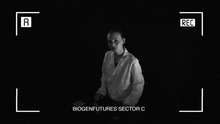
In 2013, Dewey-Hagborg was contacted by an assistant medical examiner in Delaware,[11] as a result of her work with Stranger Visions. The project involved developing a portrait of an unidentified woman whose case has remained unsolved for 20 years. She agreed to be an adviser to assist with the case.[5] Though the resulting portrait based on the unidentified woman's DNA could only be as accurate as existing technology allowed, leaving room for speculation, Dewey-Hagborg viewed working on the case as the only potential use for this type of face-generating technology.[12][14] "If you can add anything at all to her description, if you can increase the possibility her loved ones may find her even one little bit I think it's worth it."[14] Critics of Dewey-Hagborg's involvement in the Delaware case express concern for what they call "D.I.Y. forensic science" and question the role of civilians in state investigations.[26]
Invisible
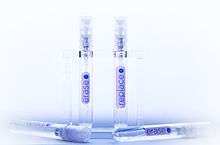
Dewey-Hagborg's work with Stranger Visions and interest in issues surrounding genetic surveillance lead to the development of two products whose purpose is to eliminate DNA traces. The first, Erase, is a bleaching spray that cleans surfaces (e.g., cups, silverware) of DNA evidence. The second, Replace, is a spray consisting of a blend of genes designed to introduce foreign DNA evidence to the surface, therefore masking any of the original DNA remaining in that area.[1] Dewey-Hagborg views these as a "citizens' defense against the looming DNA surveillance state."[43]
Additional exhibitions and events
Dewey-Hagborg's work has been exhibited at The Monitor Digital Festival in Guadalajara, Mexico,[28] PS1 MoMA, Long Island City, New York,[5][28] the New York Public Library in New York City, the Science Gallery at Trinity College Dublin, Ireland,[5][44] the UTS Gallery in Sydney, Australia,[5] the Jaaga Art and Technology Center in Bangalore, India, the Museum Boijmans in Rotterdam, Netherlands, and the Ars Electronica Center in Linz, Austria.[5]
Dewey-Hagborg has also produced the following selected works:
- Trace Recordings: Surveillance and Identity in the 21st Century at the UTS Gallery, Ultimo NSW, Australia[5][45]
- Cyber In Securities, Pepco Edison Place Gallery, Washington, D.C.[22]
- Plugged In: Interactive Art in Electronic Media, Grounds for Sculpture, Domestic Arts Building, Hamilton Township, Mercer County, New Jersey.[21]
- DNA and Dust (with Paul Hazelton), QF Gallery, East Hampton, New York.[46]
- Unlanguage (with Adriana Varella), computer interactive installation, the Poland Mediations Bienniale, Zamek Castle, Poland.[5]
- Open Circuit, PS1 MoMA, Long Island City, New York.[17]
- Jaaga Dhvani, sound art, Bangalore, India[47]
- A Becoming Resemblance (with Chelsea Manning), Fridman Gallery, New York City.[48]
Selected grants and awards
- 2016 Creative Capital Award[49]
- 2013 VIDA 15.0 Art and Artificial Life International Awards, special mention[50]
- 2012 Artist's Residency and Jerome Foundation Grant, Clocktower Gallery, Manhattan, N.Y.[51]
- 2012 Residency at Eyebeam[52][53]
- 2008 Artist's Residency and Grant, Sculpture Space, Utica, New York.[54]
Gallery
 Invisible (2014)
Invisible (2014) Invisible (2014)
Invisible (2014) DNA Spoofing with Aurelia Moser (2013)
DNA Spoofing with Aurelia Moser (2013) DNA Spoofing (2013)
DNA Spoofing (2013) DNA Spoofing (2013)
DNA Spoofing (2013) Stranger Visions (2012)
Stranger Visions (2012) Who Owns You (2011)
Who Owns You (2011) Hydrophony (2011)
Hydrophony (2011)- Listening Post (2009)
 Listening Post (2009)
Listening Post (2009)- Listening Post (2009)
 Netlingua (2008)
Netlingua (2008) Netlingua (2008)
Netlingua (2008)
See also
- Parabon NanoLabs, which utilizes a similar technique of forensic artwork
References
- Brodwin, Erin (July 4, 2014). "New Generation of Bio-Hackers make DNA misbehave". Newsweek Global. 162 (26): 1–7. Retrieved August 7, 2014.
- Aldous, Peter (2013-06-15). "Who's looking through your discarded DNA?". New Scientist. 281 (2921): 12.
- Aldous, Peter (June 10, 2013). "Artwork highlights legal debate over 'abandoned' DNA". New Scientist. Retrieved August 7, 2014.
- Natalie Angley, "Artist creates faces from DNA left in public", CNN.com, September 4, 2013.
- Colanduno, Derek (December 31, 2013). "Pieces of You #223". Skepticality. Retrieved August 5, 2014.
- Wilkinson, Alec (July 1, 2013). "Mask Crusader". New Yorker. 89 (19): 22–23. Retrieved August 5, 2014.
- Schwendener, Martha (August 28, 2011). "Populism, Technology, and Interactivity". The New York Times.
- "Photosynthesis and Experiments in Sustainable Robotics". Artists' Television Access. March 25 – April 30, 2005. Retrieved August 5, 2014.
- Dewey-Hagborg, Heather. "Lighter Than Air". YouTube. Retrieved August 5, 2014.
- Dewey-Hagborg, Heather (April 16, 2011). "Spurious Memories". YouTube. Retrieved August 5, 2014.
- Dawsey, Josh (March 11, 2013). "Art emerges from DNA left behind". The Wall Street Journal (Eastern Edition). p. A19. Retrieved August 5, 2014.
- Squires, Acacia (May 12, 2013). "Litterbugs beware: turning found DNA into portraits". NPR. Retrieved August 5, 2014.
- Rodrigo, Nandi (May 31, 2013). "Faces in the Crowd, Printed in 3-D". The New York Times Blog. The New York Times. Retrieved August 5, 2014.
- Herper, Matthew (May 31, 2013). "Artist Creates Portraits from People's DNA. Scientists Say 'That's Impossible'". Forbes. Retrieved August 5, 2014.
- Dewey-Hagborg, Heather. "CV" (PDF). deweyhagborg. Archived from the original (PDF) on August 27, 2014. Retrieved August 5, 2014.
- "ITP alum collaboration with Chelsea Manning". Tisch School of the Arts. New York University. June 29, 2017. Retrieved April 10, 2020.
- "Saturday Sessions: Hosted by Mattew Radune, Heather Dewey-Hagborg, and Thomas Dexter Featuring Open Circuit". MoMa PS1. January 29, 2011. Retrieved August 14, 2014.
- "Art and Technology Studies: Faculty". School of the Art Institute of Chicago. Retrieved August 18, 2014.
- "Event Guide July thru December 2011". ISSUU.com. p. 15. Retrieved August 5, 2014.
- Dewey-Hagborg, Heather (June 28, 2010). "Totem". YouTube. Retrieved August 5, 2014.
- Schwendener, Martha (August 28, 2011). "Populism, Technology, and Interactivity". The New York Times. Retrieved August 5, 2014.
- Jenkins, Mark (September 18, 2013). "A 'Cyber' exhibit as timely as the news". Washington Post. p. E18.
- Krulwich, Robert (June 28, 2013). "Artist plays detective: Can I reconstruct a face from a piece of hair?". NPR. Retrieved August 7, 2014.
- "Trafics optiques a l'heure numerique: a Creteil, l'exposition "Micro Macro" interroge notre perception du reel"". Le Monde. April 6, 2014.
- Wang, Linda (June 24, 2013). "Guarding Our DNA: Art project exposes the vulnerability of the genetic material we unintentionally leave behind". Chemical & Engineering News. 91 (25): 33. doi:10.1021/cen-09125-scitech2.
- Pauwels, Eleanore (June 1, 2013). "Leave me your DNA ... and I'll 3-D print your face". The Guardian. Retrieved August 7, 2014.
- "Stranger Visions: The DNA You Leave Behind". Wilson Center. June 3, 2013. Retrieved August 14, 2014.
- Dewey-Hagborg, Heather (Winter 2014). "Heather Dewey-Hagborg Stranger Visions". C: International Contemporary Art. 120: 57.
- Passarello, D (March 17, 2013). "Dna smarriti, una seconda vita che si fa opera d'arte". Il Sole 24 Ore.
- Gambino, Megan (May 3, 2013). "Creepy or Cool? Portraits Derived From the DNA in Hair and Gum Found in Public Places". Smithsonian. Retrieved August 18, 2014.
- Gruber, Ben (July 2, 2013). "Artist stirs privacy debate with portraits from DNA". Reuters. Retrieved August 7, 2014.
- Andersen, Kurt (February 8, 2013). "Making Portraits out of DNA". Studio 360. Retrieved August 7, 2014.
- "Stranger Visions Portraits". Heather Dewey-Hagborg. Archived from the original on October 3, 2014. Retrieved August 18, 2014.
- "Stranger Visions Samples". Heather Dewey-Hagborg. Archived from the original on October 13, 2014. Retrieved August 18, 2014.
- Walters, Helen (June 20, 2013). "A Portrait from a Single Hair: The Work of Heather-Dewey Hagborg". Ideas.Ted.Com. Retrieved August 7, 2014.
- Enserink, Martin (February 18, 2011). "Emerging Forensics Field May Hit Legal and Ethical Obstacles". Science. 331 (6019): 840. doi:10.1126/science.331.6019.840. PMID 21330505.
- Kobler, Jason (May 2, 2018). "Don't Give Your DNA to Giant Genetic Databases". Vice.
- Nevins, Jake (August 3, 2017). "A Becoming Resemblance: artist creates portraits using Chelsea Manning's DNA". The Guardian.
- Taylor, Alan (May 8, 2018). "Photos of the Week: Super Blue Blood Moon, Starry Night, Stratofortress". The Atlantic.
- https://deweyhagborg.com/bio/
- http://www.mu.nl/en/exhibitions/heather-dewey-hagborg-genomic-intimacy
- https://seattleartfair.com/Projects-Talks/2018/Heather-Dewey-Hagborg-and-Chelsea-E-Manning-Probab.aspx
- Hartnett, Kevin (May 11, 2014). "How to cover your DNA trail". Boston Globe.
- "Stranger Visions Sculpture, 2013: Heather Dewey-Hagborg". Science Gallery. Retrieved August 18, 2014.
- Frost, Andrew (November 18, 2013). "Artists use surveillance technology to explore extent we are monitored". The Guardian (Sunday). Retrieved August 14, 2014.
- "Art Round Up of the Week". Hamptons Art Hub. July 9, 2013. Retrieved August 14, 2014.
- "Jaaga Dhvani: Space Voice". Eyebeam. July 1, 2011. Retrieved August 14, 2014.
- "A Becoming Resemblance: artist creates portraits using Chelsea Manning's DNA". The Guardian. August 3, 2017. Retrieved August 3, 2017.
- "Announcing the 2016 Creative Capital Awardees: $4,370,000 Committed to 46 Diverse Projects". Creative Capital. Retrieved October 5, 2017.
- "Stranger Visions: Heather Dewey-Hagborg (USA)". Telefonica Fundacion. Retrieved August 14, 2014.
- "Heather Dewey-Hagborg, Stranger Visions". Clockwork Tower. January 2, 2013. Retrieved August 14, 2014.
- "Heather Dewey-Hagborg | eyebeam.org". eyebeam.org. Retrieved 2016-01-28.
- "Heather Dewey-Hagborg Uses DNA To Reconstruct Your Identity for Art". Motherboard. Retrieved 2016-02-01.
- "Alumni Artists". Sculpture Space. Archived from the original on October 13, 2014. Retrieved August 14, 2014.